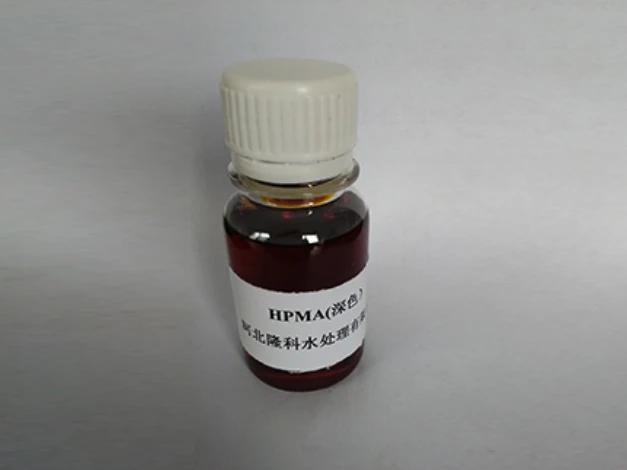polyacrylamide production
Polyacrylamide Production An Overview
Polyacrylamide (PAM) is a synthetic polymer widely used across various industries due to its unique properties, such as high solubility in water, excellent thickening capabilities, and effective flocculation characteristics. Its production has significant implications for sectors such as water treatment, soil stabilization, and the oil industry. This article dives into the process of polyacrylamide production, its applications, and the environmental considerations associated with its use.
Production Process of Polyacrylamide
The production of polyacrylamide typically involves the polymerization of acrylamide monomers, which can be sourced from petrochemical processes. This is generally achieved through a method known as free radical polymerization. The process begins with the preparation of acrylamide from acrylonitrile, which is subsequently hydrolyzed. The hydrolysis converts acrylonitrile into acrylamide, a colorless, odorless compound that serves as the building block for polyacrylamide.
Once acrylamide is prepared, it is mixed with a catalyst, which usually includes a free radical initiator such as potassium persulfate or ammonium persulfate. This initiator triggers the polymerization reaction, where the acrylamide molecules link together to form long-chain polymers. The reaction conditions, such as temperature and pH, are meticulously controlled to ensure the proper formation of polyacrylamide. Polymers of varying molecular weights can be produced by adjusting the concentration of acrylamide and the amount of initiator, which ultimately influences the polymer's properties.
After the polymerization process, the resulting polyacrylamide is typically in the form of a gel or solid. It is then dried and granulated for ease of handling and application. The final product can be further modified to produce different variants of polyacrylamide, such as cationic, anionic, and non-ionic forms, depending on the intended use.
Applications of Polyacrylamide
Polyacrylamide has found extensive use across various industries. One of its primary applications is in water treatment, where it acts as a flocculant to help clarify water by aggregating suspended particles, making their removal easier. This is particularly valuable in municipal water treatment facilities and in industrial applications, where wastewater management is crucial.
polyacrylamide production

In agriculture, polyacrylamide is used for soil conditioning. It helps improve soil structure, enhances water retention, and reduces erosion, leading to better crop yields. Additionally, it can be employed in irrigation systems to optimize water usage, making it particularly beneficial in arid regions.
The oil and gas industry also utilizes polyacrylamide in enhanced oil recovery processes. The polymer is injected into oil reservoirs to increase the viscosity of the water flood, improving the displacement efficiency of oil extraction.
Environmental Considerations
While polyacrylamide offers numerous benefits across various applications, its production and use raise several environmental concerns. The primary raw material, acrylamide, is classified as a neurotoxin and potential carcinogen. Therefore, strict regulations and safety protocols are necessary to prevent exposure during manufacturing and application.
Another concern is the biodegradability of polyacrylamide. While it is not considered persistent in the environment, the degradation of polyacrylamide can produce acrylamide residues. Researchers are exploring biodegradable alternatives and more environmentally friendly production methods to mitigate these concerns.
Furthermore, the sourcing of raw materials often relies on non-renewable fossil fuels, prompting calls for sustainable practices in the production of polyacrylamide. Innovations in bio-based alternatives and cleaner production techniques may help reduce the environmental footprint associated with its manufacture and ultimate use.
Conclusion
In conclusion, polyacrylamide production plays an integral role in several key industries due to its versatile applications. From enhancing water treatment processes to improving agricultural practices, PAM is a valuable polymer. Nonetheless, as its use continues to grow, it is essential to address the associated environmental and health concerns through responsible manufacturing, application practices, and ongoing research into safer alternatives. Balancing the benefits of polyacrylamide with its environmental impact is crucial for promoting sustainable development in the industries that rely on this important polymer.
-
lk-319-special-scale-and-corrosion-inhibitor-for-steel-plants-advanced-solutions-for-industrial-water-systemsNewsAug.22,2025
-
flocculant-water-treatment-essential-chemical-solutions-for-purification-processesNewsAug.22,2025
-
isothiazolinones-versatile-microbial-control-agents-for-industrial-and-consumer-applicationsNewsAug.22,2025
-
scale-inhibitor-key-solutions-for-water-system-scale-preventionNewsAug.22,2025
-
organophosphonates-versatile-scale-inhibitors-for-industrial-water-systemsNewsAug.22,2025
-
scale-and-corrosion-inhibitor-essential-chemical-solutions-for-water-system-maintenanceNewsAug.22,2025





